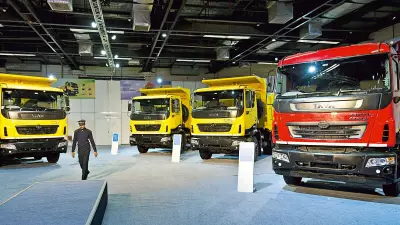
Ford Motor Corporation's top executive has sounded the alarm about a critical shortage of skilled workers in the United States that's leaving thousands of high-paying manufacturing jobs unfilled across the automotive industry.
America's Skilled Labor Crisis Exposed
Jim Farley, President and CEO of Ford Motor Corporation, revealed during an appearance on the Office Hours: Business Edition podcast that workers at the company's manufacturing facilities have raised serious concerns about young people's lack of interest in factory jobs. "None of the young people want to work here," Farley quoted employees as saying, describing this as an industry-wide problem.
The auto executive disclosed startling numbers that highlight the severity of the situation. Ford currently has approximately 5,000 mechanic positions offering substantial six-figure salaries that are struggling to find qualified applicants. These mechanical roles provide an annual compensation of $120,000 – nearly double the median American worker's pay according to Fortune's report.
Beyond Ford: A National Emergency
Farley didn't mince words when describing the broader implications for the United States. "We are in trouble in our country. We are not talking about this enough," he stated emphatically. The business leader pointed to over a million openings in critical sectors including emergency services, trucking, factory workers, plumbers, electricians, and various tradesmen positions.
The CEO drew from personal history, mentioning his grandfather who was among Ford's 389 employees working on the iconic Model T. Farley emphasized that trade jobs similar to those offered by Ford "made our country what it is" and historically provided solid middle-class livelihoods for American workers.
Why Higher Salaries Aren't Solving the Problem
Despite significant wage increases, the vacancies persist. Farley noted that in Ford's 2023 agreement with the United Auto Workers union, the company eliminated its lowest tier wage scale and committed to giving all workers a 25% salary increase over four years. However, he observed that higher pay alone hasn't accelerated the filling of these positions.
"Part of the problem for the shortage of manufacturing jobs is the lack of education and training," Farley explained. He cited the example of learning to remove a diesel engine from a Ford Super Duty truck, which requires at least five years of training. The current system, he noted, fails to meet industry standards.
The Ford CEO specifically highlighted the lack of investment in vocational education and the scarcity of trade schools. "We do not have trade schools. We are not investing in educating a next generation of people like my grandfather who had nothing, who built a middle-class life and a future for his family," he lamented.
The Broader Manufacturing Landscape
Data from the US Bureau of Labor Statistics reveals the extensive nature of this problem. Until August 2025, there were over 400,000 unfilled manufacturing jobs in the United States, despite the country's unemployment rate standing at 4.3%.
A 2024 study by the Manufacturing Institute and Deloitte in the US found that more than 100 manufacturing companies identified recruitment and worker retention as their most significant challenge.
However, there are emerging signs of change. Generation Z, facing unemployment challenges, is increasingly moving away from the traditional college-to-corporate career path. Many are opting for trade schools to avoid substantial education debt while securing relatively lucrative positions. According to data from the National Student Clearinghouse, vocational school enrollment in the US has increased by 16% year-on-year, indicating a potential shift in career preferences among younger Americans.





